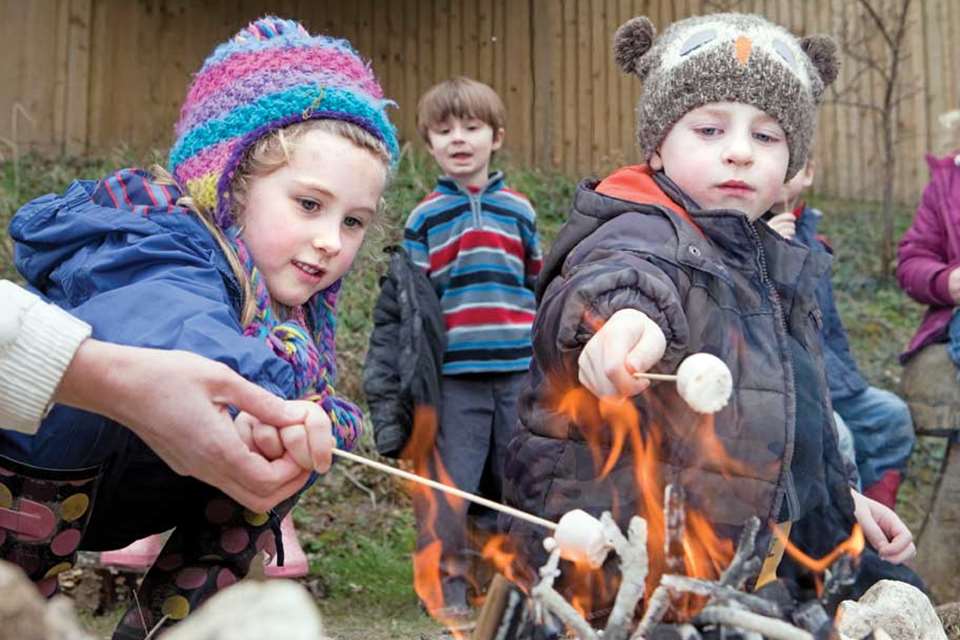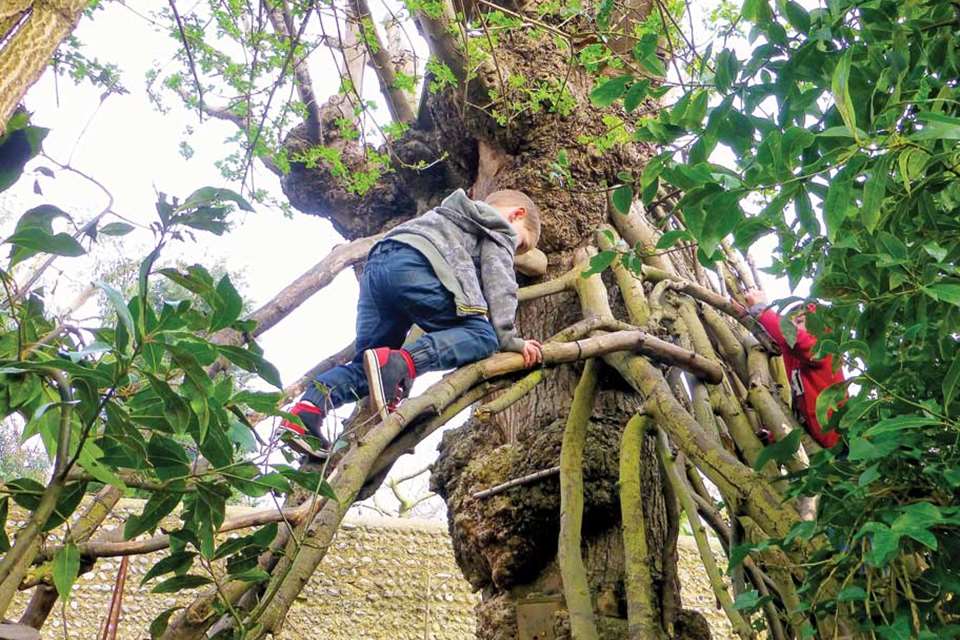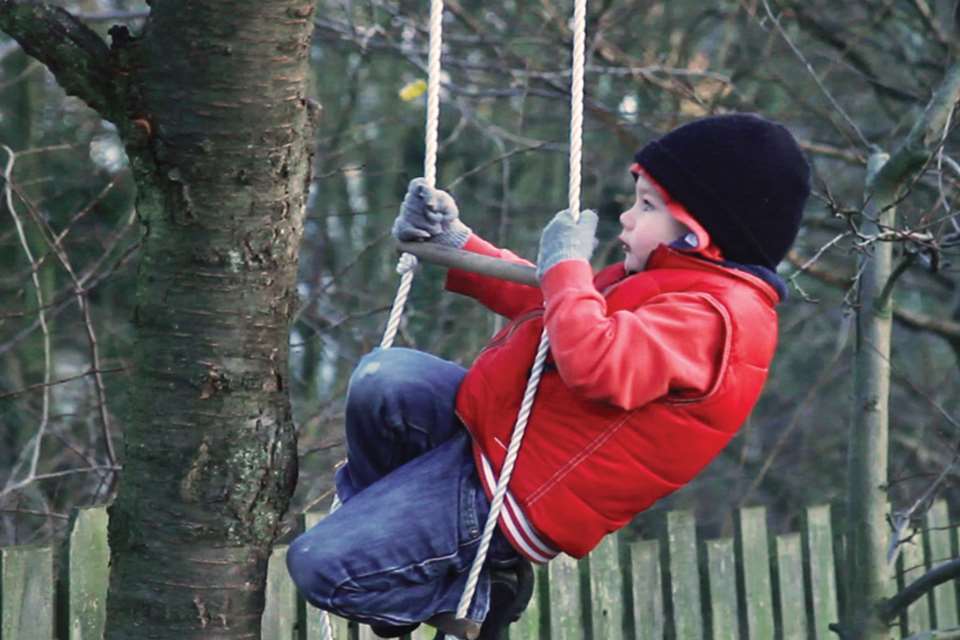A Unique Child: Risk - Better safe…?
Ruth Beattie
Monday, April 3, 2017
Should four-year-olds walk to nursery alone? Ruth Beattie looks at the surprising attitude to safety in Switzerland, and asks whether we could learn from it in this country

Soon after my daughter Isabelle started kindergarten in Switzerland, aged four, we received a note from the teacher. ‘We will be going to the woods tomorrow,’ it read. ‘Please bring a penknife. It must be sharp.’
This sort of comment would have many UK parents and teachers recoiling, but it reflects a very Swiss attitude to safety. Intercultural education specialist Marie Madeleine Steiger explains, ‘You want to protect your children from dangerous things, but life is dangerous. You don’t help children when you protect them from life.’
This attitude starts early. One Swiss nursery I visited never locked the main door, assuring me if a child wandered onto the street, other children would notice and bring them back. In another, the low, second-floor windows had no safety catches. ‘You worry too much,’ the owner maintained.
ROAD SAFETY
Nowhere is this apparently laissez-faire attitude more apparent than in road safety. Throughout Switzerland, four-, five- and six-year-olds can be seen walking to school without adults, sporting luminous orange bands identifying them as kindergarten children.
Bruno Tamborini, school traffic safety officer in the Canton of Zurich, explains, ‘One of kindergarten’s aims is that the children master the school way. It is a classroom which is often undervalued. Children learn to evaluate their surroundings, gain social benefits, form friendships and take exercise.’
He does stress that children are not expected to achieve this independence alone. ‘We have to be aware young children have difficulty measuring speed and distance of traffic.’ Parents are expected to begin traffic training from an early age. ‘Children need to understand local conditions, and which are the safest streets to use,’ he says. ‘They should certainly be accompanied initially, and find other children to walk with, and we need to be aware that each child develops at a different rate.’
His views are shared by Ms Steiger: ‘Parents and teachers need to trust children, and this strengthens them and promotes independence.’ She gives an example from her class of seven-year-olds, ‘One dad was worried I wasn’t keeping a close enough eye on his child on the 10-minute walk to swimming. He was amazed when I explained I have put him in charge of the others, making sure they behave and don’t run in front of him. We discuss the journey afterwards and I give lots of praise. He is doing a great job.’
In contrast, early years consultant Kathryn Solly feels many settings in the UK err too much on the side of caution. ‘Children need to get outside and play. Children and adults need to see the benefits of risk-taking, rather than the dangers of hazards,’ she says.
While many lay the blame at the foot of Ofsted inspectors or the Health and Safety Executive, she believes this is largely unfair, describing them as ‘supportive’. ‘Statutory welfare regulations are often misinterpreted and can be used more wisely. Settings have to adhere to regulations, but there is a lot of scope within this,’ she adds. She believes the problem is overprotective parents and ‘paranoid’ practitioners who are scared of litigation.
For early years providers wanting to expand their children’s experiences, Ms Solly recommends, ‘Get more confident via training, go on a course or visit, take little steps. Children need the support of attentive, engaged adults who take risks themselves.’
IN MY OPINION
I have had many heart-thumpingly anxious moments, often made excuses for my ‘overprotectiveness’, and have sometimes seen children behaving dangerously near roads. Occasionally my children have felt burdened with responsibilities which I felt were age-inappropriate. Yet there is also no doubt they have had exciting experiences that would have been difficult to enjoy with stricter safety regulations.
I felt very proud watching my seven-year-old swing from a trapeze during a circus project, and my children are thrilled with the bone knives they whittled in the woods. As Mr Tamborini says, ‘Life is life-threatening. Enough accidents happen at home playing. You cannot always protect your child, but the early years are the right time to influence them.’
FACTS AND FIGURES
Both Switzerland and England perform relatively well in terms of child safety, according to figures from the European Child Safety Alliance. In a survey of 39 countries, both were in the safest 10 in terms of traffic and general childhood accidents.
A survey by Swiss safety group BFU found most accidents affecting under-16s at school happen in sports lessons, and most are minor. Of the 11 deaths in the past 16 years, 10 occurred while swimming, causing the organisation to call for more awareness of safety in water.
MORE INFORMATION
Adventure, Risk and Challenge in the Early Years by Kathryn Solly. Routledge
Groups offering relevant courses and events include Early Education (www.earlyeducation.org.uk) and Keeping Early Years Unique (www.keyu.co.uk)
[asset_library_tag 1454,Download the PDF]







